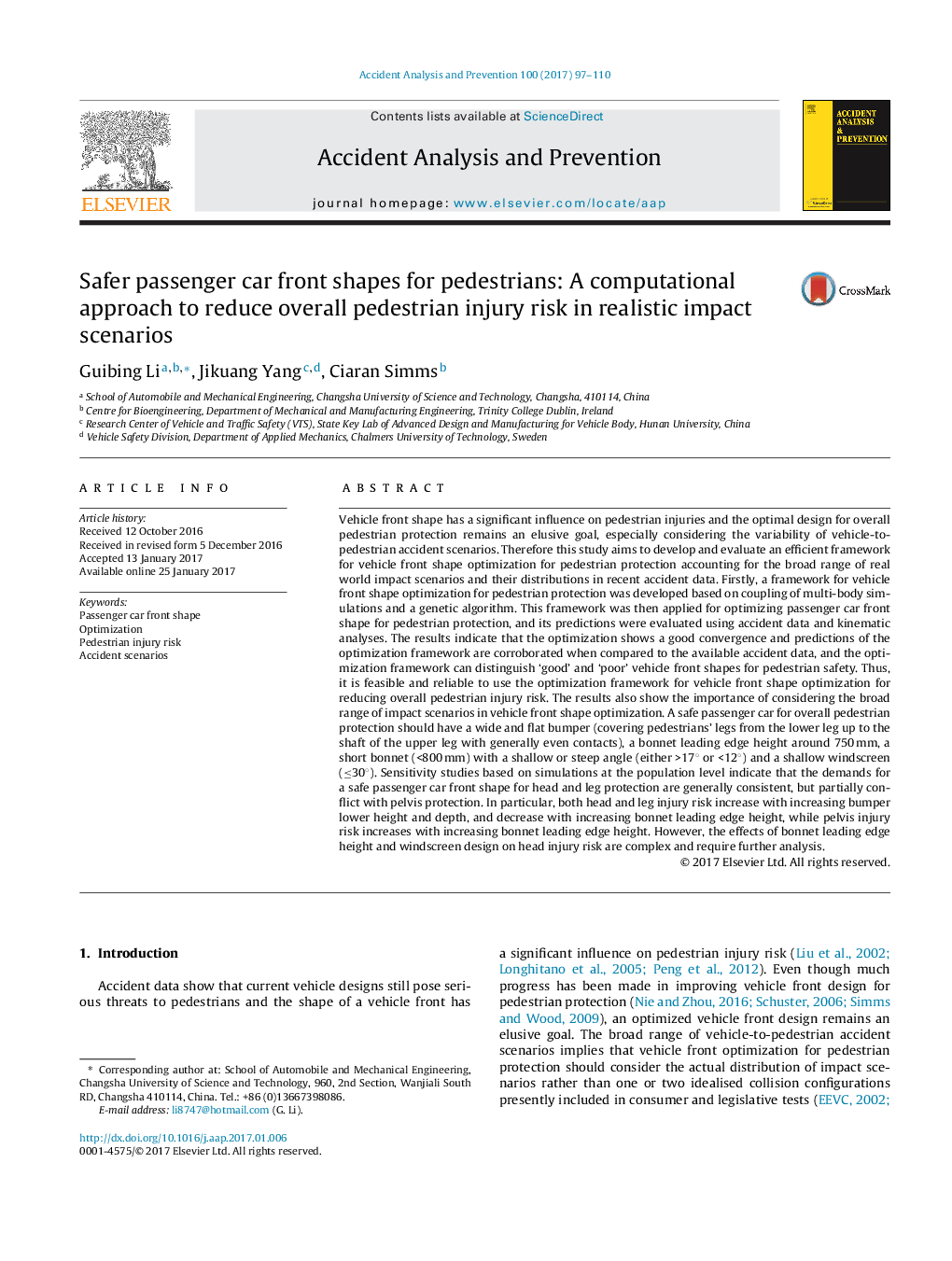| کد مقاله | کد نشریه | سال انتشار | مقاله انگلیسی | نسخه تمام متن |
|---|---|---|---|---|
| 4978650 | 1452899 | 2017 | 14 صفحه PDF | دانلود رایگان |
عنوان انگلیسی مقاله ISI
Safer passenger car front shapes for pedestrians: A computational approach to reduce overall pedestrian injury risk in realistic impact scenarios
ترجمه فارسی عنوان
اشیاء ایمن تر از اتومبیل های مسافری برای عابران پیاده: رویکرد محاسباتی برای کاهش خطر صدمه به عابر پیاده در سناریوهای تاثیر واقع بینانه
دانلود مقاله + سفارش ترجمه
دانلود مقاله ISI انگلیسی
رایگان برای ایرانیان
کلمات کلیدی
شکل جلو اتومبیل مسافری، بهینه سازی، خطر آسیب زدن به عابر پیاده، سناریوهای حادثه،
موضوعات مرتبط
مهندسی و علوم پایه
مهندسی شیمی
بهداشت و امنیت شیمی
چکیده انگلیسی
Vehicle front shape has a significant influence on pedestrian injuries and the optimal design for overall pedestrian protection remains an elusive goal, especially considering the variability of vehicle-to-pedestrian accident scenarios. Therefore this study aims to develop and evaluate an efficient framework for vehicle front shape optimization for pedestrian protection accounting for the broad range of real world impact scenarios and their distributions in recent accident data. Firstly, a framework for vehicle front shape optimization for pedestrian protection was developed based on coupling of multi-body simulations and a genetic algorithm. This framework was then applied for optimizing passenger car front shape for pedestrian protection, and its predictions were evaluated using accident data and kinematic analyses. The results indicate that the optimization shows a good convergence and predictions of the optimization framework are corroborated when compared to the available accident data, and the optimization framework can distinguish 'good' and 'poor' vehicle front shapes for pedestrian safety. Thus, it is feasible and reliable to use the optimization framework for vehicle front shape optimization for reducing overall pedestrian injury risk. The results also show the importance of considering the broad range of impact scenarios in vehicle front shape optimization. A safe passenger car for overall pedestrian protection should have a wide and flat bumper (covering pedestrians' legs from the lower leg up to the shaft of the upper leg with generally even contacts), a bonnet leading edge height around 750 mm, a short bonnet (<800 mm) with a shallow or steep angle (either >17° or <12°) and a shallow windscreen (â¤30°). Sensitivity studies based on simulations at the population level indicate that the demands for a safe passenger car front shape for head and leg protection are generally consistent, but partially conflict with pelvis protection. In particular, both head and leg injury risk increase with increasing bumper lower height and depth, and decrease with increasing bonnet leading edge height, while pelvis injury risk increases with increasing bonnet leading edge height. However, the effects of bonnet leading edge height and windscreen design on head injury risk are complex and require further analysis.
ناشر
Database: Elsevier - ScienceDirect (ساینس دایرکت)
Journal: Accident Analysis & Prevention - Volume 100, March 2017, Pages 97-110
Journal: Accident Analysis & Prevention - Volume 100, March 2017, Pages 97-110
نویسندگان
Guibing Li, Jikuang Yang, Ciaran Simms,
